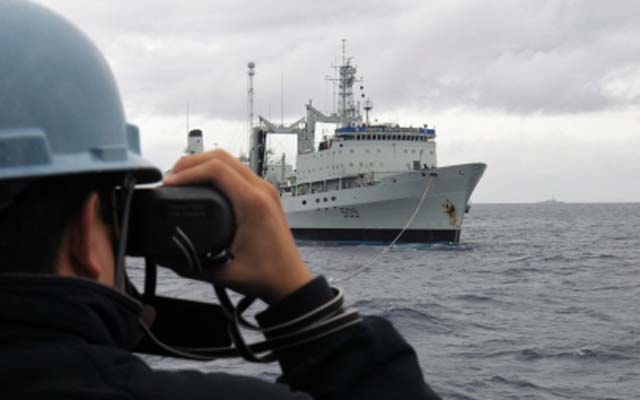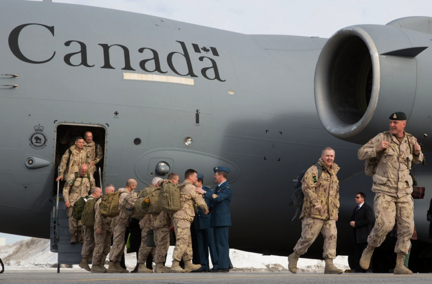A key component of Canada’s armed forces since 1910, the Royal Canadian Navy (RCN) has deployed in both World Wars and to support various overseas contingency operations and peacekeeping missions since the end of the Cold War. Over the last year the RCN has featured prominently in Canadian media, however, less for its role as a core contributor to joint operations, than for a string of glaring incidents that inevitably draw attention to the dubious state of Canada’s naval capabilities. With the longest coastline in the world and an operationally impoverished maritime force, Canada can ill afford to neglect its Navy any longer.
Many of Canada’s naval vessels are almost 50 years old, which qualifies them for museum status in many countries. Canada’s Protecteur-class supply ships were launched in the early 1960s, Iroquois-class destroyers in the late 1960s, and Halifax-class frigates in the early 1990s. Thus, several of Canada’s surface combat and support ships are approaching retirement age and are in critical need of replacement. To that end, the phased execution of the National Ship Procurement Strategy (NSPS) is underway, although it remains trapped in Canada’s procurement labyrinth and deeply undermined by funding shortfalls. As the Canadian government continues to debate how best to replace Canada’s deteriorating maritime fleet, the problems with Canada’s current ships continue to manifest themselves.
In April 2013, the Royal Canadian Navy featured tragically in Canadian news media after a US commercial fishing trawler collided with one of its docked Halifax-class frigates, HMCS Winnipeg. Considering that HMCS Winnipeg was docked at Canada’s Pacific Coast naval headquarters, it is difficult to contemplate how such an incident could have occurred. Six Canadian sailors sustained injuries in the collision and were subsequently hospitalized and treated for injuries. The RCN has rightfully filed a claim against American Seafoods/American Dynasty, the company with which the trawler is registered, citing the latter’s negligence as the cause of the incident.
In August 2013, during a routine towing exercise, HMCS Protecteur, one of Canada’s Navy supply ships, collided with HMCS Algonquin, a Navy guided-missile destroyer, causing damage to both. The latter was severely damaged and to this date remains out of commission. HMCS Algonquin will cost $3 million to repair before testing and evaluation, let alone redeployment. Representatives of the Navy stated that there is an inherent risk of ships operating together at sea in close proximity; however, they have not witnessed an accident of this sort in their entire careers. Both vessels had more than 300 crew members on board when they collided; fortunately, there were no injuries. Both ships were scheduled to take part in joint maritime exercises in the Asia-Pacific region, but were immediately ordered to return to British Columbia for inspection after the collision.
Only two weeks ago, HMCS Protecteur sustained “significant damage” after a fire erupted in the engine room. Although crew members successfully extinguished the fire, twenty of them suffered minor injuries in the process. Protecteur was subsequently adrift at sea for a number of days awaiting rescue. The USNS Sioux and USS Chosin, both American navy ships, are now graciously towing Protecteur to Pearl Harbor where it will undergo damage assessments. Protecteur was carrying 279 crew members, 17 family members and two civilian contractors when the fire broke out.
While it is argued that engine fires can occur in ships new and old, Protecteur’s 45 year-old systems are certainly more susceptible to malfunctions than those found in newer vessels. Given that Protecteur is slated for retirement in 2016, the RCN is carefully deliberating whether to repair the ship or simply decommission it prematurely. The likely retirement of Protecteur would leave Canada with only one support ship to service its entire maritime fleet, which is especially disconcerting given that replacement joint support ships will not be delivered to the RCN until 2019 at the earliest. This could leave a two or three year period during which the RCN will lack the capability to supply warships at sea, and will force the RCN to rely on allies to fill that role.
The tragedies that have crippled two of the RCN’s ships and damaged another underscores the need for the government to expedite the NSPS to reconstitute Canada’s ailing maritime force. The government must prioritize the development and manufacture of new ships to provide the RCN with the necessary tools to contribute to national, regional and global peace and stability, commensurate with Canada’s stated foreign policy objectives.




